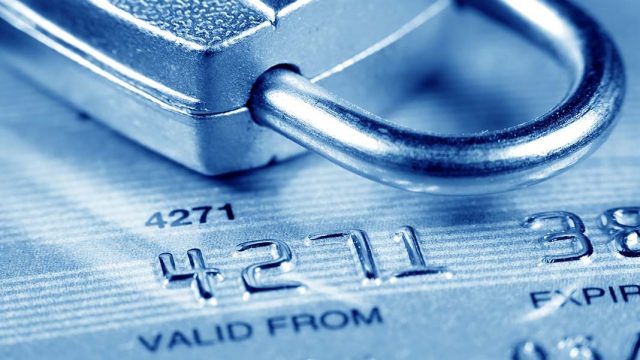By ANDREW J. LUCA
The changing economic environment has reduced our purchasing power at the grocery store, gas pump and while shopping online. As a result, more of our daily coffee dollars remain safely tucked away in our wallets and purses.
We should all exhibit a similar mindset to actively safeguard our credit profiles from thieves. Their criminal acts, which historically multiply in difficult fiscal times, can irreparably damage your credit for years to come.
Here are ways to thwart the credit thieves.
Protect Your Card’s Information:
The ease of paying by credit, either in person or online, cannot be denied. However, this convenience can come at a price if one does not exercise care with their plastic.
Most cards now issued in the U.S. are chip-enabled. Instead of swiping your card’s magnetic strip as done in years past, the consumer will insert (or “dip”) their card into the retailer’s terminal which assigns a unique code to that transaction.
This process provides better protection for one’s credit information as it makes “cloning” a credit card account number more difficult for crooks. Since not all laws have caught up to this technology, not all retailers are required to upgrade their terminals.
However, new laws can impose 100 percent liability upon those retailers who have not yet upgraded if a data breach and resulting damages can be proven by a customer who patronized an establishment still using a “point-of-sale” swipe station.
Protect Your Credit Future:
Your credit history is your resume to better mortgage rates, credit card rates and car loan terms. If you do not protect this valuable personal resource, you risk having less money in your pocket down the road.
The Fair Credit Reporting Act is designed to give consumers information about how their credit profile is assembled by each of the three nationwide Consumer Reporting Agencies (CRA).
The Act also requires consumers to be provided with steps they can take to ensure their profile’s accuracy. Experian, one of the big CRAs, reports that 1 in 20 Americans are victims of Identity Theft.
The most common types of Identity Theft are (1) the unauthorized use of one’s credit card (i.e. someone uses your card number to buy food and other products) or (2) opening a credit account or taking out loans in your name using your good credit.
As you can imagine, when they default it’s your credit history that is jeopardized. Use the following free tools to guard against someone stealing your credit.
Initial Fraud Alert:
Ask one of the CRAs, (Experian, Equifax or Trans Union), to place a “Fraud Alert” on your file. This designation requires creditors to follow additional procedures when opening a line of credit at a Boscov’s, AT&T store, etc.
A helpful feature with a Fraud Alert is that you only need to notify one of the CRAs. Once created, a Fraud Alert will be placed on your credit profile with the other two national CRAs automatically. An Initial Fraud Alert is for one year.
An Extended Fraud Alert is for seven years and is used by previous victims of Identity Theft who submit a filed Identity Theft Report.
Security Freeze:
You may also place a “Security Freeze” on your account. A Security Freeze prevents a reporting agency from releasing your credit information without your specific authorization. Unlike a Fraud Alert, if you initiate a Security Freeze, you must do so with each of the three Reporting Agencies.
While this action prevents credit cards or loans from being issued in your name to individuals who are not you, it can slightly delay your own ability to sign up for instant credit at stores.
However, a Security Freeze can easily be removed by logging onto each CRA website and removing it. To encourage the use of a Fraud Alert, a Security Freeze or to learn more about your credit profile in general, each of the national Consumer Reporting Agencies websites can be found at: https://www.transunion.com/ or https://www.experian.com/ or https://www.equifax.com/
“A Penny Saved is a Penny Earned”
While Thomas Fuller may not have had Identity Theft in mind when he wrote those words in 1661 (Ben Franklin wrote something similar in his Poor Richard’s Almanac, published in 1737), both men were correct when it comes to having your credit information stolen.
The out-of-pocket expense to remedy a single incident of Identity Fraud can be as much as $10,000. This figure does not account for the headaches, frustration and delays encountered if trying to legitimately obtain credit for a mortgage or a car loan.
The moral here, taking a stitch in time to review and employ these measures to protect your financial identity will indeed save much more than nine.
About the Author: Andrew J. Luca, Esquire is a co-founding member of the CKL Law Group, LLP and has been practicing Real Estate and Consumer Fraud law in New Jersey for nearly 20 years.








